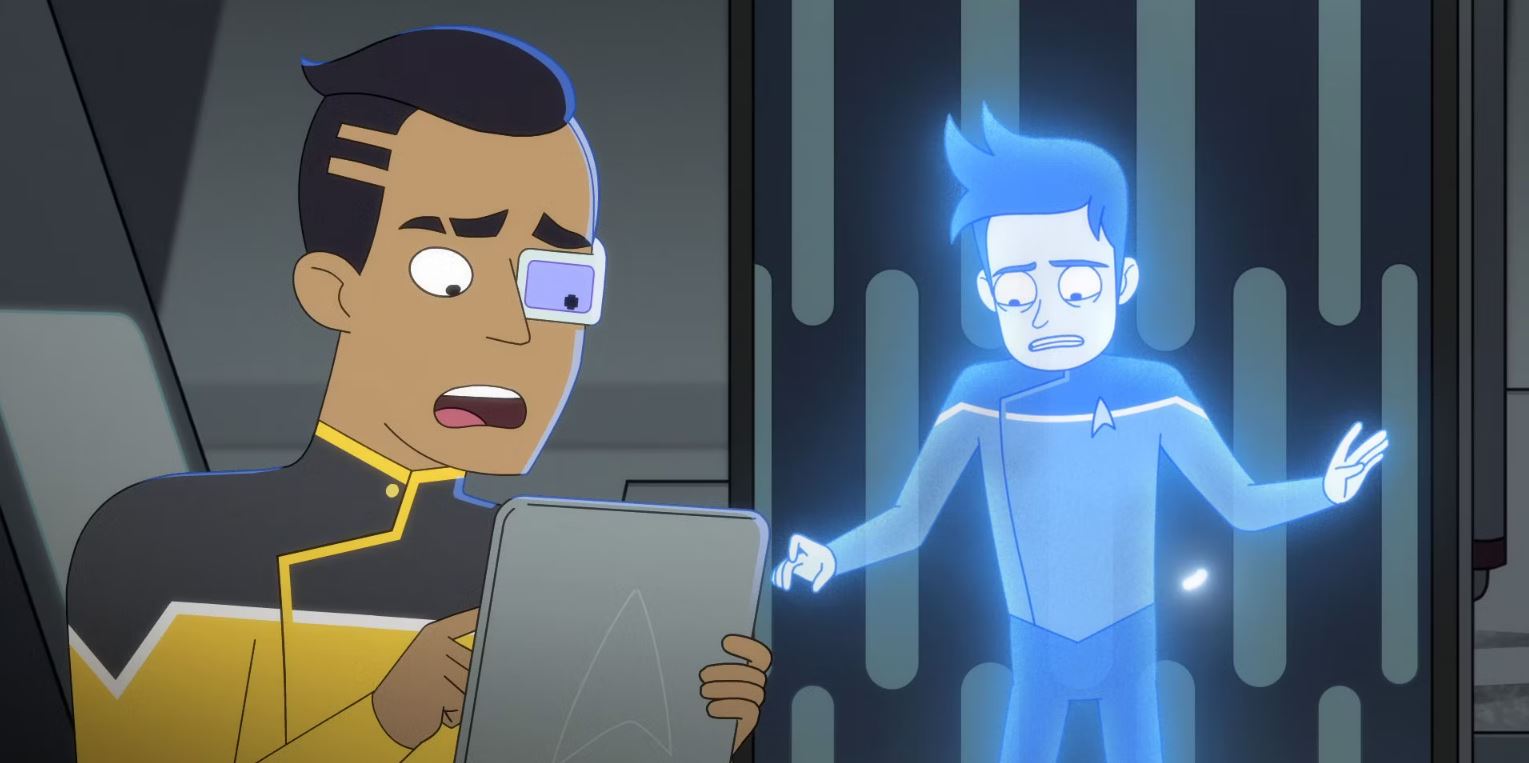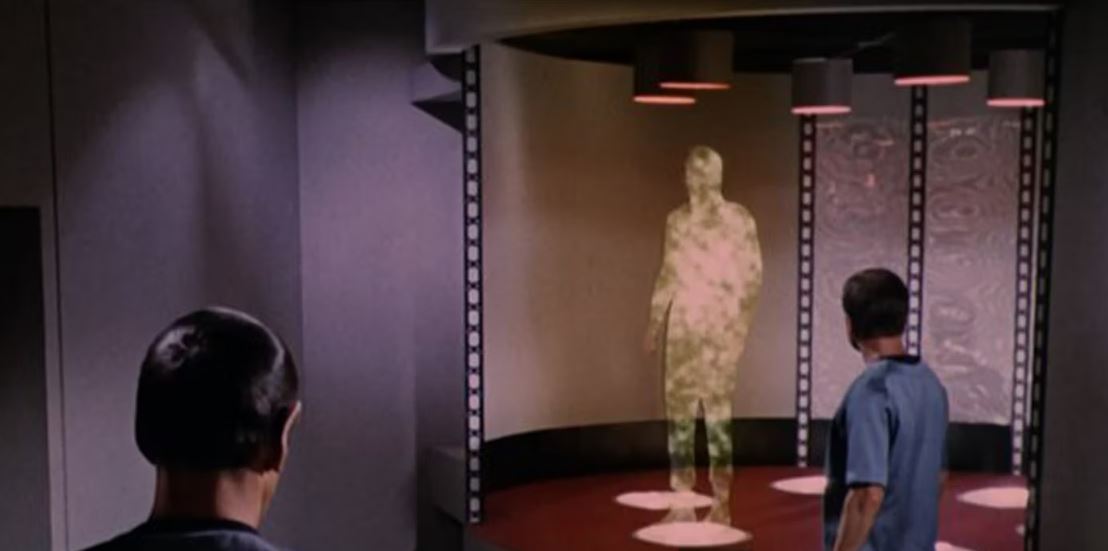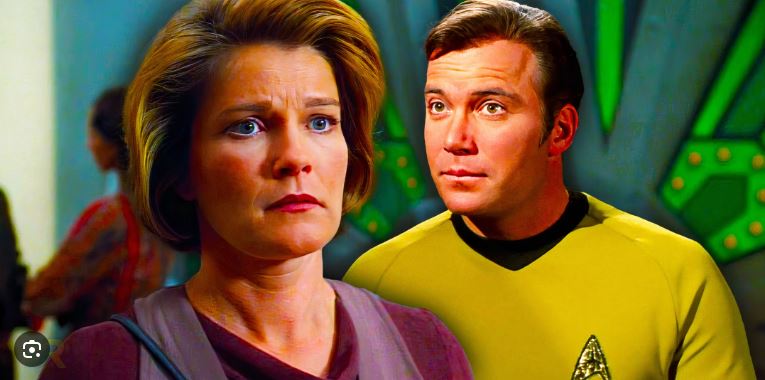Star Trek: The Original Series delivered on its promise to show Captain James T. Kirk (William Shatner) and the crew of the Starship Enterprise on their mission “to explore strange new worlds” through the ingenious use of the transporter. Showing the USS Enterprise or a shuttlecraft touching down on every new planet would incur additional expenses, so Star Trek: The Original Series’ writers invented the transporter to cheaply move landing parties from ship to planet and back. Since then, the transporter has been a staple of Star Trek storytelling in every Star Trek show.
Star Trek’s transporter works by converting matter to energy at a subatomic level. The energy stream is fed through the pattern buffer, then the emitter array, and transmitted through subspace to be rematerialized at the desired location. Beaming back from a location back to a transporter room requires the transporter operator to get a lock on the individual to be transported using a targeting scanner. Generally speaking, the transporter can’t be used while a starship is at warp, cloaked, or has shields up, though there are some exceptions to this rule throughout the Star Trek timeline, especially as transporter technology evolves.
Star Trek’s Transporter Has Been Invaluable To The Franchise’s Storytelling

Transporter Malfunctions Are A Class Of Star Trek Stories On Their Own
Star Trek’s transporter has been invaluable to the franchise’s storytelling since moving personnel quickly means plots can move just as fast. Storytelling necessity breeds innovations to transporter technology that have helped Star Trek stories move even faster. Star Trek: The Next Generation’s 24th century has site-to-site transport, which eliminates the need for a stopover in the transporter room, since personal signals in Starfleet officers’ comm badges allow transporters to function more efficiently. In the 32nd century, Star Trek: Discovery has personal transporters that double as holding space for items, making characters’ inventory virtually limitless.
Of course, advanced technology is also prone to malfunctions, and Star Trek’s transporters are no exception. Transporter technology can backfire in countless ways, creating a whole new staple trope for Star Trek stories. Star Trek: Enterprise showed early transporter tests were deadly, and Star Trek: The Motion Picture featured a particularly gruesome transporter accident. More interesting cases include Star Trek: Voyager’s Tuvix (Tom Wright), and Ensign Brad Boimler (Jack Quaid) being half-beamed in Star Trek: Lower Decks. With so many potential problems, it’s no wonder that characters like Dr. Leonard McCoy (DeForest Kelley) and Lieutenant Reginald Barclay (Dwight Schultz) don’t trust transporters.
The Transporter Problem Star Trek Has Never Fully Managed To Resolve

The Plot Will Always Be Stronger Than Star Trek’s Advanced Technology
There’s still one problem with the transporter from Star Trek: The Original Series that the franchise has never managed to resolve. Because the transporter allows for such easy travel between locations, Star Trek has had to create reasons that transporter travel is impossible whenever the plot demands it. If transporter use would provide a simple solution to a necessary problem, the transporter operator “can’t get a lock. ” Blocks that prevent beaming endangered parties back to safety have come from naturally occurring phenomena like ambient radiation or ion storms, and from devices like planetary dampening fields or fluctuations in power.
The problem of being in a place where Star Trek characters can’t use the transporter does create an interesting balance. It’s comparable to modern stories where having a working cell phone would solve the whole dilemma, but characters suddenly lose reception, or discover their battery is dangerously low. Even skilled transporter operators like Scotty (James Doohan) and Chief Miles O’Brien (Colm Meaney) have been thwarted by conveniently-timed “interference”, whether that makes transport impossible or only delayed. By design, it’s a problem that can’t ever be solved, since the plot is stronger than the skill of Star Trek’s greatest engineers.
